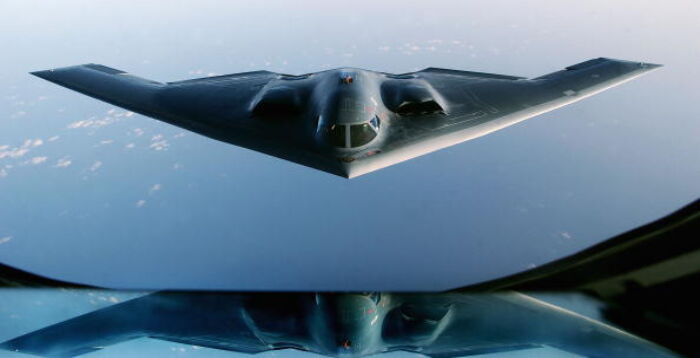On October 17, the US military deployed B-2 stealth bombers, targeting underground facilities used by the Houthi armed group in Yemen. The move is widely seen as a response to Houthi attacks on Middle Eastern shipping routes, and also as a warning to Iran.
The extent of the damage caused to the Houthi armed group by this airstrike is not yet clear. However, this attack appears to mark the first time in years that B-2 bombers have been used in combat and the first time they have targeted the Houthi armed group.
US Defense Secretary Lloyd Austin stated that the B-2 bombers targeted “five sturdy underground weapon storage sites located in Houthi-controlled areas.” Neither he nor the US Central Command immediately assessed the damage caused by the B-2 bombers to the Houthi armed group, but the Central Command stated that they believe no civilians were killed in the airstrike.
Austin’s statement emphasized the US capability to strike facilities hidden by enemy forces, regardless of their depth or fortification. The use of the US Air Force’s B-2 Spirit long-range stealth bombers demonstrates the United States’ global strike capability to take action against these targets anytime, anywhere if necessary.
It is widely believed that Austin’s remarks are also a warning to Iran.
Iran is a major supporter of the Houthi armed group in Yemen and has launched ballistic missile attacks against Israel twice in the past year. If the US decides to target Iran’s nuclear facilities, they could utilize B-2 bombers, which are the only aircraft capable of releasing the GBU-57 Massive Ordnance Penetrator bomb.
The Houthi armed group’s satellite news channel reported attacks around the Yemeni capital Sanaa and the Houthi stronghold Saada, but did not immediately provide specific information on casualties or damage. The Houthi armed group has controlled the Yemeni capital Sanaa since 2014.
Since the start of the Israel-Hamas conflict in October 2023, the Houthi armed group has attacked over 80 commercial ships passing through the Red Sea with missiles and drones, seized one vessel, and sunk two ships, resulting in the deaths of four sailors.
The Houthi armed group claims they target ships related to Israel, the US, or the UK to pressure Israel to end its attacks on Hamas in Gaza. However, many of the targeted ships have little to no connection to the conflict in Gaza, including some bound for Iran.
The Red Sea is a crucial international shipping lane, with goods worth trillions of dollars passing through annually. Since the Houthi armed group began attacking commercial ships, many shipping companies have had to reroute, increasing costs and prolonging delivery times.
The Houthi armed group has also launched missiles at Israel and shot down a US military MQ-9 Reaper drone. They have threatened new attacks against Israel for a ground invasion into Lebanon and the assassination of Hezbollah leader Hassan Nasrallah.
When dealing with Houthi armed group attacks in the Red Sea, the US government mainly takes defensive measures, often intercepting drones and missile attacks aimed at commercial ships and US warships. Additionally, the US military has targeted the Houthi armed group’s military infrastructure but has avoided attacks on broader targets in Yemen.
Analysts believe the location mentioned by the Houthi armed group in Thursday’s airstrike aligns with the rebels’ underground bases.
According to an analysis by the International Institute for Strategic Studies in April of this year, the Houthi armed group has refurbished tunnels that once stored Scud missiles during the rule of Yemen’s former dictator Ali Abdullah Saleh. These locations include two military bases, the former presidential palace, and Yemen’s national television station in Sanaa.
Analysis suggests that after reaching a ceasefire agreement with the Saudi-led coalition, the Houthi armed group has constructed a large underground tunnel network near Sanaa, seemingly for their own use, to bolster their position and enhance military capabilities.
Iran also relies on underground missile base networks.
The B-2 bomber, equipped with nuclear capabilities, was first used in the Kosovo War in 1999. Each aircraft is valued at around one billion dollars, and the US military rarely deploys it in combat. It has also been used in bombing campaigns in Afghanistan, Iraq, and Libya.
These aircraft are stationed at Whiteman Air Force Base in Missouri, typically used for long-range strikes.
The most recent use of the B-2 in combat by the US was in 2017, targeting terrorist group “Islamic State” in Libya, resulting in the deaths of over 80 militants. US defense officials at the time stated that the operation thwarted potential terrorist attacks in Europe.
(References from the Associated Press and Reuters)

